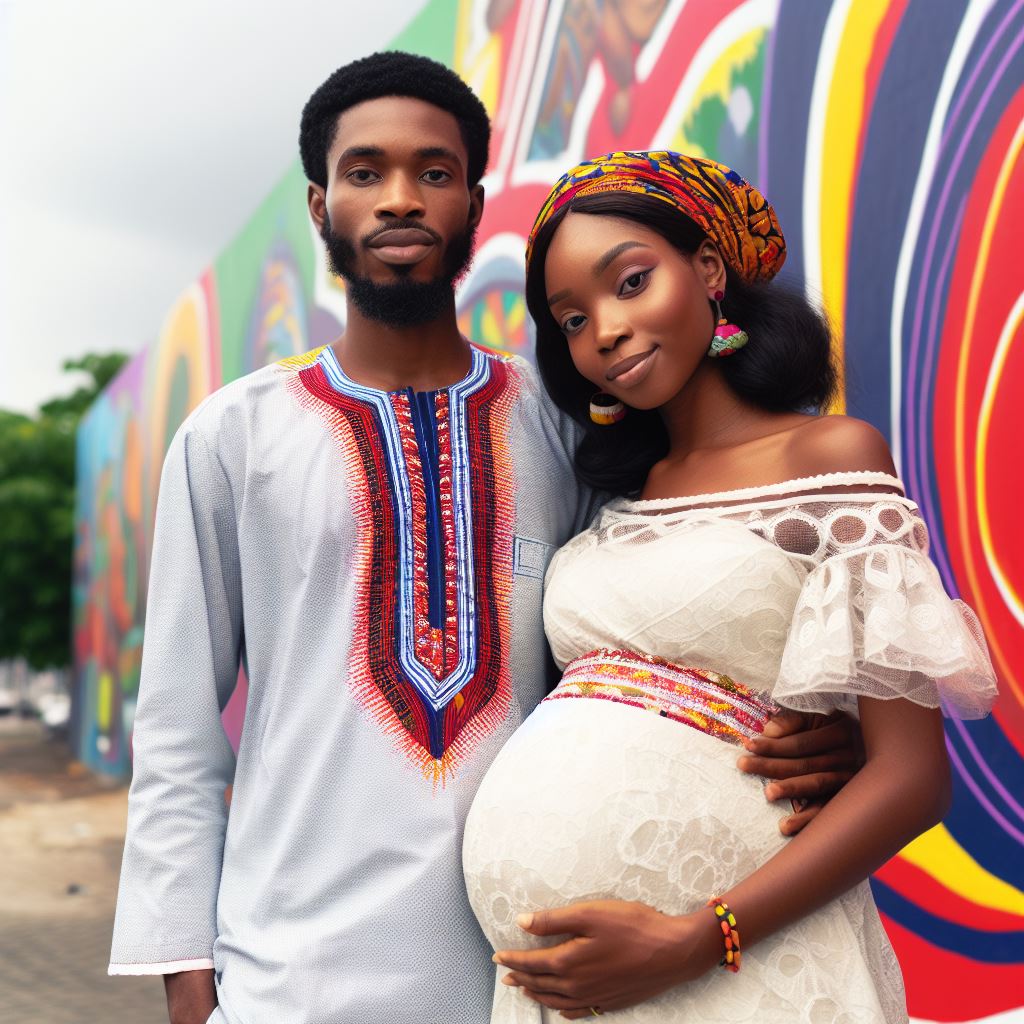Introduction
A. Genotypes and Blood Groups Overview
Unlocking the mysteries within our DNA, genotypes, and blood groups reveal intricate details about our genetic makeup.
B. Relevance in Nigerian Marriages
- Genetic Compatibility: Understanding genotypes is crucial for assessing genetic compatibility in prospective couples.
- Risk of Genetic Disorders: Insight into blood groups helps anticipate potential risks of genetic disorders in offspring.
- Health Planning: Armed with this knowledge, couples can make informed decisions for family planning and healthcare.
- Societal Impact: Recognizing the impact of genotypes on societal health, particularly in Nigeria, emphasizes the importance of widespread awareness.
Embark on a journey through the science behind genotypes and blood groups, exploring their profound implications in the intricate tapestry of life, love, and health.
Understanding Genotypes
A. Genotypes and its significance in heredity
Genotypes play a crucial role in understanding heredity and the transmission of traits.
By definition, genotypes refer to the genetic makeup of an individual, which includes all the genes they possess.
Genetic information is stored in these genes, and they determine the characteristics or traits an individual will inherit from their parents.
B. The basics of genetics and how traits are inherited
Genetics, the study of genes and heredity, helps explain how traits are passed down from one generation to the next.
Traits can include physical characteristics, such as eye color, hair color, or height, as well as genetic disorders or predispositions to certain diseases.
C. The role of genes in determining an individual’s genotype
Genes are segments of DNA that carry the instructions for building proteins, which are responsible for various functions in the body.
When it comes to determining an individual’s genotype, genes are the key players.
They exist in pairs, with one gene inherited from each parent. These genes can be either dominant or recessive.
The combination of genes inherited from parents determines an individual’s genotype.
For traits influenced by a single gene, such as eye color, the genotype can be represented by two alleles.
The alleles can be either the same (homozygous) or different (heterozygous).
For example, an individual with two alleles for brown eyes would have a genotype represented as BB, and an individual with two alleles for blue eyes would have a genotype represented as bb.
Other traits can be influenced by multiple genes or have more complex inheritance patterns, such as blood type. In the case of blood type, there are three alleles involved: A, B, and O.
The combinations of these alleles determine the different blood types, such as A, B, AB, or O.
D. Examples of different genotypes and their corresponding traits
Let’s consider some examples to better understand different genotypes and their corresponding traits.
1. Example 1
- Genotype: A
- Trait: A person with a genotype of AA for blood type will have blood type A.
2. Example 2
- Genotype: AO
- Trait: A person with a genotype of AO for blood type will have blood type A.
However, they can also pass on the O allele to their offspring.
3. Example 3
- Genotype: BB
- Trait: A person with a genotype of BB for blood type will have blood type B.
4. Example 4
- Genotype: AB
- Trait: A person with a genotype of AB for blood type will have blood type AB, which is considered the universal recipient.
5. Example 5
- Genotype: OO
- Trait: A person with a genotype of OO for blood type will have blood type O, which is considered the universal donor.
Understanding genotypes is fundamental in comprehending how traits are inherited and how genetic information is passed down through generations.
Genotype combinations provide insight into the possible phenotypes or observable traits an individual may exhibit.
In summary, genotypes are the genetic makeup of an individual and play a significant role in determining inherited traits.
Genes act as the building blocks of genotypes, carrying instructions for specific traits. Different genotypes, such as AA, Aa, or aa, result in various phenotypes.
Understanding genotypes helps us unravel the science behind heredity and how traits are passed down from parents to offspring.
Read: Debunking Myths: Blood Groups and Personality Traits in Nigeria
Types of Blood Groups
A. Blood groups and their importance in medical contexts
Blood groups are classifications of blood that determine compatibility for transfusions and play a role in various medical procedures.
B. Classification of blood groups into A, B, AB, and O
Blood groups are classified based on the presence of particular antigens on red blood cells.
There are four main types: A, B, AB, and O.
C. Presence of specific antigens and antibodies in each blood group
Blood group A has A antigens and anti-B antibodies, group B has B antigens and anti-A antibodies, group AB has both A and B antigens, and group O has neither A nor B antigens but has both anti-A and anti-B antibodies.
D. Significance of blood groups in blood transfusion and pregnancy
Blood transfusions require matching blood groups to prevent adverse reactions.
In pregnancy, blood groups of the mother and fetus are important to avoid complications such as hemolytic disease of the newborn.
Blood Groups and their Characteristics
1. TYPE A
- Has A antigens on red blood cells
- Produces anti-B antibodies
- Compatible with blood groups A and O
2. TYPE B
- Has B antigens on red blood cells
- Produces anti-A antibodies
- Compatible with blood groups B and O
3. TYPE AB
- Has both A and B antigens on red blood cells
- Does not produce anti-A or anti-B antibodies
- Universal recipient (compatible with all blood types)
4. TYPE O
- Has neither A nor B antigens on red blood cells
- Produces both anti-A and anti-B antibodies
- Universal donor (compatible with blood type O
Blood groups play a crucial role in blood transfusions as compatibility between the donor and recipient is vital.
When blood types are mismatched, antibodies can react, causing serious complications.
In medical emergencies, identifying the blood group quickly is essential for administering the right type of blood.
Blood banks carefully screen and categorize blood to ensure proper matching during transfusions.
Blood groups are also significant during pregnancy, particularly when the mother has a different blood type than the fetus.
If the mother is Rh-negative and the fetus is Rh-positive, the mother’s body may produce antibodies that can attack the fetus’s red blood cells.
This can lead to hemolytic disease of the newborn, a potentially life-threatening condition.
Understanding blood groups helps medical professionals make informed decisions about transfusions and anticipate potential complications during pregnancy.
It allows for safer medical procedures, preventing adverse reactions and promoting successful outcomes.
In general, blood groups are essential in medical contexts due to their role in transfusions and pregnancy.
The classification of blood groups into A, B, AB, and O, based on specific antigens and antibodies, ensures compatibility and reduces the risk of complications.
Medical professionals must consider blood groups to provide the best possible care for patients.
Read: Steps to Ensure Genotype Compatibility Before Tying the Knot

See Related Content: Avoiding Common Mistakes in Nigerian Marriage Registry Process
Genotypes and Blood Groups Relationship
In this blog section, we will explore the connection between genotypes and blood groups.
We will describe how blood groups are determined by specific genotypes and explain the concept of compatibility between blood groups for safe transfusions and pregnancy.
Furthermore, we will discuss the potential risks and complications involved when partners with incompatible genotypes and blood groups have children.
A. The Connection between Genotypes and Blood Groups
Genotypes play a crucial role in determining an individual’s blood group.
- Blood groups are classified based on the presence or absence of certain antigens on the surface of red blood cells.
- These antigens are determined by specific genes present in an individual’s DNA, known as genotypes.
- For example, the ABO blood group system is determined by the presence or absence of the A and B antigens.
- Individuals with the genotype AA or AO have blood group A, those with the genotype BB or BO have blood group B, while individuals with the genotype AB have blood group AB.
- Those with the genotype OO lack both A and B antigens, resulting in blood group O.
B. Compatibility between Blood Groups for Transfusions and Pregnancy
- When it comes to blood transfusions or pregnancies, compatibility between blood groups is essential to prevent adverse reactions.
- Individuals with blood group A can safely receive blood from donors with blood group A or O. Blood group B individuals can receive blood from donors with blood group B or O.
- Blood group AB is considered the universal recipient since they can receive blood from any other blood group.
- On the other hand, individuals with blood group O can only receive blood from donors with blood group O, making it the universal donor.
- Pregnancy compatibility is also influenced by blood group and genotype. A pregnant woman with a negative Rh factor requires special attention if the fetus has a positive Rh factor.
Incompatibility can lead to complications, such as hemolytic disease of the newborn.
C. Risks and Complications of Incompatible Genotypes and Blood Groups
- When partners with incompatible genotypes and blood groups conceive a child, there can be potential risks and complications.
- One well-known example is the risk of Rh incompatibility between a Rh-negative mother and a Rh-positive father.
- In such cases, if the fetus inherits the Rh-positive blood group from the father, the mother’s immune system may develop antibodies against the fetal blood, leading to hemolytic disease of the newborn.
- This condition can cause severe anemia and jaundice in the newborn, requiring immediate medical intervention.
- Other risks of incompatible genotypes and blood groups include higher chances of certain genetic disorders, such as sickle cell anemia or thalassemia, if both partners carry the corresponding genes.
These disorders can significantly impact the health and well-being of the child.
Understanding the relationship between genotypes and blood groups is essential for medical professionals and individuals alike.
Genotypes determine an individual’s blood group, which plays a vital role in compatibility for blood transfusions and during pregnancy.
Incompatible genotypes and blood groups can pose risks and complications, making it crucial to consider these factors before planning a family
Read: Exploring the Four Main Blood Groups: A, B, AB, and O
Explore Further: Bridging Religion: Christian-Muslim Marriage Tales
The Genetic Implications of Marriage
A. Importance of considering genotypes and blood groups in selecting a marital partner
Marriage is a life-long commitment, and it is important to consider various factors when choosing a suitable partner.
- One crucial aspect that should not be ignored is the compatibility of genotypes and blood groups between potential spouses.
- Genotypes refer to the genetic makeup of an individual, specifically the combination of alleles present at particular gene loci.
- Blood groups, on the other hand, are determined by the presence or absence of specific antigens on the surface of red blood cells.
- Both genotypes and blood groups have implications for health and can play a significant role in the well-being of future offspring.
B. Inheritance patterns of genotypes and blood groups in offspring
When considering genotypes and blood groups, it is essential to understand their inheritance patterns.
- Certain genotypes can be dominant or recessive, meaning they may or may not be expressed in individuals carrying them. This directly affects the likelihood of passing on specific genotypes to children.
- For example, in the case of sickle cell anemia, a genetic disorder prevalent in Nigeria, inheriting two copies of the recessive allele leads to the disease.
- If both partners are carriers of the sickle cell trait (AS genotype), there is a 25% chance that their child will have sickle cell anemia (SS genotype).
- Understanding these patterns can help individuals make informed decisions about their potential partner’s genotype compatibility.
C. Risks and health implications of certain genotype combinations in children
- The risks and health implications associated with certain genotype combinations should also be considered.
- In the case of sickle cell anemia, individuals with the SS genotype experience severe pain, anemia, organ damage, and a shorter life expectancy.
- Therefore, it is crucial to avoid certain genotype combinations to minimize the likelihood of passing on such health conditions to future generations.
D. Recommendations on pre-marital genetic testing and counseling for couples in Nigeria.
In Nigeria, where sickle cell anemia is prevalent, pre-marital genetic testing and counseling are strongly recommended.
- By undergoing genetic testing, individuals can identify their genotype and potential health risks associated with specific genotype combinations.
- This knowledge enables couples to make informed decisions to minimize the risk of having children with severe genetic disorders.
- Genetic counseling is equally important as it provides couples with guidance and support.
- A genetic counselor can explain the implications of different genotype combinations, discuss reproductive options, and help couples understand the best course of action to ensure the health of their future children.
In short, selecting a marital partner goes beyond superficial compatibility. Genotypes and blood groups play a significant role in the well-being of potential offspring.
Understanding inheritance patterns, risks, and health implications associated with specific genotypes is essential for making informed decisions.
Pre-marital genetic testing and counseling offer invaluable guidance to couples, especially in countries like Nigeria where certain genetic disorders are prevalent.
By prioritizing the consideration of genotypes and blood groups, couples can lay the foundation for a healthier future for their children.
Read: The Role of Blood Groups in Pregnancy and Transfusions
Uncover the Details: Using Nigerian Music Lyrics in Marriage Wishes
Discover More: Choosing Between Customary and Statutory Marriages in Nigeria
Conclusion
A. Summary of the key points discussed in the blog post
Overall, understanding genotypes and blood groups is crucial, especially in the context of marriage.
By prioritizing the well-being and health of their future children, individuals can make informed decisions.
To summarize, this deep dive into the science behind genotypes and blood groups has highlighted key points:
Get Your Wedding Business Featured on MarriageInNigeria.ng
Build trust, show up on Google, and attract more clients with a done-for-you profile post.
Get Featured Now- The importance of knowing your blood type and genotype in determining potential health risks.
- The significance of blood compatibility in avoiding potential complications during pregnancy.
- The risk of inheriting genetic disorders when both partners have recessive genes for a specific condition.
- The role of genetic counseling in providing guidance and support for couples with high-risk genotypes.
B. Importance of understanding genotypes and blood groups in the context of marriage
It is clear that having a comprehensive understanding of genotypes and blood groups is vital for making informed decisions regarding marriage and family planning.
C. Encourage readers to prioritize the well-being and health of their future children by making informed decisions.
- Therefore, it is crucial for individuals to prioritize the well-being and health of their future children.
- By seeking genetic counseling and considering potential risks, they can make educated choices that minimize the chances of passing on hereditary conditions.
- In the end, we must recognize the power of knowledge in order to create a healthier future for our offspring.
- Let us all take responsibility for making informed decisions that promote the well-being and health of our future generations.




